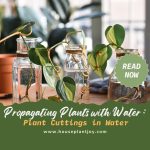HousePlantJoy is supported by our audience. When you purchase through one of our links, we may earn a small affiliate commission. As an Amazon Associate I earn from qualifying purchases. Your cost is not affected.
==================
Water is crucial for plant growth as it is fundamental in various physiological processes, such as photosynthesis, nutrient uptake, and transpiration. Indoor plants depend on the correct water type and quality to thrive.
Several factors influence the choice of water for indoor plants. Tap water often contains chlorine, which can be harmful to plants. To make tap water safe for plants, it’s recommended to let the water sit for a few hours to allow the chlorine to dissipate. However, tap water can accumulate harmful minerals in the plant’s soil over time in areas with hard water. Water softeners, which replace calcium and magnesium ions with sodium ions, can harm plants, as high sodium levels can lead to stunted growth. Therefore, there are better choices than softened watering plants.
Distilled water, rainwater, and filtered water are generally safe for plants. Distilled water removes all minerals, making it safe but not necessarily the best water for indoor plants. Rainwater is a great choice as it’s naturally soft and free of harmful chemicals, but collecting rainwater is only sometimes feasible. Filtered water, especially those using activated carbon filters or reverse osmosis, removes harmful chemicals and can provide high-quality water for plants.
When watering plants, use room temperature water to avoid shocking the plant’s roots. Proper watering, considering the specific needs of the plant species, is essential for healthy plant growth.
Best Water for Indoor Plants
Water is vital for the survival of plants, but not all water is created equal. If you’re trying to determine the best water for indoor plants, the following insights into tap water may help.
Tap Water
When watering indoor plants, many people use tap water. It’s convenient and readily available. However, it’s important to consider the pros and cons of this choice.
Pros and Cons
One of the main advantages of using tap water for your plants is its accessibility. You can get it from any faucet in your home. Tap water also contains minerals like calcium and magnesium that plants need for healthy growth. However, there are drawbacks to using tap water. Depending on where you live, your tap water might contain harmful chemicals like chlorine or fluoride, which can be toxic to plants over time. Tap water can also be “hard,” meaning it has high levels of minerals, which can build up in the plant’s soil and harm its roots.
Suitable Plants
Most plants can tolerate tap water, but some are more sensitive to its chemicals and minerals. Spider plants, for example, are extremely sensitive to fluoride and may develop brown tips if exposed to fluoridated water. On the other hand, house plants like pothos and snake plants are more tolerant of the minerals and chemicals in tap water. However, for the best results, it’s always a good idea to use water that is as pure as possible.
Tips for Use
To make tap water safe for plants, let it sit for a few hours or overnight to allow chlorine to dissipate. Alternatively, boil the water and let it cool to room temperature. Another option is using a water filter or conditioner that removes chlorine and other chemicals. If you’re dealing with hard water, you can dilute it with distilled or rainwater to reduce the mineral content. Remember, water at room temperature is generally best for watering plants to avoid shocking their systems with water that’s too hot or cold.
Distilled Water
Distilled water is purified water with nearly all impurities removed through distillation. This involves boiling the water and condensing the steam into a liquid. This process removes minerals and contaminants, making distilled water an excellent choice for watering indoor plants, particularly those that are sensitive to the impurities found in tap water.
Pros and Cons
One of the main advantages of using distilled water is that it’s free of harmful chemicals and minerals. This means it’s less likely to cause problems like brown spots or brown tips, which can be caused by excess minerals or chemicals in the water. Distilled water is particularly beneficial for plants that are sensitive to fluoride, chlorine, or other chemicals that may be present in tap water.
However, one drawback of distilled water is that it’s also free of beneficial minerals like calcium and magnesium that plants need for healthy growth. Additionally, tap water is more expensive and more convenient than distilled water.
Suitable Plants
Distilled water is an excellent choice for plants that are sensitive to chemicals and minerals in tap water. This includes plants like spider plants, which can develop brown tips when exposed to fluoridated water, and carnivorous plants, which can struggle to thrive when watered with tap water. It’s also a good choice for plants that require a lot of water, as the lack of minerals means there’s less risk of mineral buildup in the soil.
However, because distilled water lacks beneficial minerals, it may not be the best choice for plants that require high levels of calcium and magnesium, like tomatoes and peppers. These plants may require supplemental fertilization if watered with distilled water.
Tips for Use
Because distilled water lacks beneficial minerals, it’s a good idea to supplement your plants with a balanced, water-soluble fertilizer every few weeks to ensure they’re getting the nutrients they need. Alternatively, mix distilled water with tap or rainwater to add some minerals.
It’s also important to note that while distilled water is free of harmful chemicals, it can still become contaminated if not stored properly. Store your distilled water in a clean, sealed container to prevent contamination.
Rainwater
Rainwater is a natural choice for watering your indoor plants. As it falls from the sky, rainwater collects beneficial minerals and nutrients that can help boost plant growth. However, just like any water source, it has pros and cons.
Pros and Cons
The biggest advantage of using rainwater for your indoor plants is its purity. Rainwater does not contain the added chemicals that tap water does. It’s soft water, meaning it has low concentrations of calcium and magnesium. Soft water is generally better for most plants, as it doesn’t lead to mineral buildup in the soil. Rainwater also naturally contains some beneficial minerals and nutrients that plants need to thrive.
However, there are some drawbacks to using rainwater. Depending on where you live and the conditions in which you collect it, rainwater can contain pollutants or debris. It’s important to ensure the rainwater you collect is free from contaminants before using it to water your plants.
Suitable Plants
Rainwater is a good choice for most houseplants. Plants particularly sensitive to chemicals or minerals in tap water, such as spider plants, will benefit greatly from rainwater. Even plants that tolerate tap water, like pothos and snake plants, will appreciate rainwater’s purity and natural minerals. However, some plants prefer hard water and may need to do better with soft water. Knowing your specific plants’ needs is important before switching to rainwater.
Tips for Use
When collecting rainwater, ensure your collection container is clean and contaminant-free. If you’re collecting rainwater from a roof, remember that roofing materials can introduce pollutants into the water. If you’re concerned about the purity of your rainwater, you can filter it through an activated carbon filter to remove any potential contaminants.
Before using rainwater on your plants, let it come to room temperature. Cold water can shock your plants, potentially causing damage. Also, be sure to pour water directly into the plant’s soil rather than spraying it on the leaves, as this can lead to fungal growth.
Reverse Osmosis Water
When it comes to ensuring optimal plant health, water quality is paramount. While tap water is convenient, it can sometimes contain harmful chemicals or minerals that can harm plants. Reverse osmosis water is one alternative that many gardeners turn to.
Pros and Cons
Reverse osmosis is a process that removes contaminants from water by pushing it through a semipermeable membrane. The result is water free of most contaminants, including salts, bacteria, and sediment. This can be beneficial for plants, especially those that are sensitive to chemicals and minerals. However, it’s worth noting that reverse osmosis also removes beneficial minerals that plants need, like calcium and magnesium.
One of the primary benefits of reverse osmosis water is its purity. It doesn’t contain harmful chemicals or minerals that can build up in the soil and harm plants. It’s particularly useful for plants sensitive to tap water chemicals or minerals. However, because reverse osmosis water lacks beneficial minerals, it can result in stunted growth or other deficiencies if used exclusively.
Suitable Plants
Plants particularly sensitive to tap water’s chemicals or minerals are the best candidates for reverse osmosis water. This includes certain houseplants, like orchids, which prefer rainwater or distilled water due to their sensitivity. However, most plants can benefit from reverse osmosis water if you know the need for additional minerals.
Tips for Use
One of the main issues with reverse osmosis water is that it lacks the beneficial minerals that plants need for growth. You can add a remineralization step to your watering routine to address this. This involves adding back some of the minerals that are beneficial for plants. You can use a commercial remineralization product or add a small amount of tap or natural spring water to your reverse osmosis water.
Another tip is to use reverse osmosis water with other water sources. For example, you could water your plants with reverse osmosis water every other time and use rainwater or aquarium water in between. This can help ensure that your plants get the minerals they need.
Benefits of Proper Water Choice for Indoor Plants
Proper water choice is pivotal in nurturing vibrant and thriving indoor plants. When nurturing your green companions, the type of water you use can significantly impact their overall health and growth. The benefits of making the right water choice extend beyond mere hydration – it influences plant growth, prevents mineral buildup, enhances pest and disease resistance, and fosters optimal soil and root conditions.
Healthy Plant Growth
A primary advantage of selecting the best water for indoor plants is promoting healthy growth. Different plant species have varying sensitivities to water quality. While some hardy varieties tolerate tap water, others, like sensitive plants or tropical species, prefer naturally soft or filtered water. Water laden with harmful chemicals or minerals can inhibit nutrient absorption, leading to stunted growth, brown spots, or even irreversible damage. Using water safe for plants gives your green companions the ideal conditions to absorb nutrients and flourish.
Prevention of Mineral Buildup
Using water with excessive minerals, such as in areas with hard water, can lead to mineral buildup in the soil and around the roots. Over time, this accumulation can hinder the plant’s ability to absorb essential nutrients, resulting in diminished growth and vitality. Opting for rainwater or filtered water collected from sources like activated carbon filters mitigates the risk of mineral deposits, ensuring your plants receive the nutrients they need without hindrance.
Improved Resistance to Pests and Diseases
Watering your houseplants with the right water can fortify their defenses against pests and diseases. The choice of water impacts the soil’s pH level, influencing the plant’s ability to absorb nutrients. Plants with water that supports their natural pH preferences are better equipped to fend off pests and diseases. This proactive approach reduces the need for chemical interventions and fosters a healthier ecosystem within your home.
Better Soil and Root Conditions
Indoor plants rely on a well-balanced environment, and the water they use significantly contributes to their soil and root health. Over time, excessive chlorine and sodium ions from tap water can accumulate in the soil and disrupt its composition. Using water that has been filtered, dechlorinated, or even naturally collected can help maintain soil health and root conditions. Healthy roots translate to efficient nutrient uptake, leading to robust plant growth.
Considerations for Watering Indoor Plants
Indoor plants are an excellent way to add a touch of nature to your home and improve air quality. But they also require proper care, especially when it comes to watering. Here are some key considerations to ensure your indoor plants thrive.
Water pH
- Importance of pH balance: The pH of your water plays a crucial role in plant health. If the pH is too high or too low, it can prevent the plants from absorbing nutrients, leading to poor growth and other issues. Most plants prefer a pH range of 6.0 to 7.0. Some plants may have specific pH requirements.
- Adjusting pH for different plants: You can test your water’s pH using a pH meter or test strips. Add vinegar or citric acid if your water’s pH is too high. If it’s too low, you can add baking soda. Be sure to retest the pH after making any adjustments. Alternatively, you can use distilled or rainwater, which usually has a neutral pH.
Temperature
- Ideal temperature range for indoor plants: Room temperature water, around 65-75°F (18-24°C), is the best water for indoor plants. Cold or hot water can shock the plants and cause harm.
- Effects of temperature extremes on plants: Cold water can cause root shock, stunt growth, and even cause root rot in some plants. Hot water can damage the plant’s roots and foliage. Always use room temperature water when watering your plants.
Water Hardness
- Explanation of hard and soft water: Hard water contains high levels of calcium and magnesium ions, while soft water is treated to remove these minerals, often replaced with sodium ions. Water softeners are commonly used to convert hard water to soft water.
- How water hardness affects plants, Hard water can cause calcium and magnesium to build up in the soil, hindering the plant’s ability to absorb nutrients. Softened water can be harmful to plants due to its high sodium content.
- Managing water hardness for indoor plants If you have hard water, consider using rainwater, distilled water, or filtered water for your plants. Avoid using water from a softener as it may contain high sodium.
Watering Frequency
- Overwatering vs. underwatering Overwatering can lead to root rot while underwatering can cause plants to dry out and wilt. It’s important to strike a balance.
- Signs of improper watering: Signs of overwatering include yellowing leaves, soggy soil, and mold growth. Signs of underwatering include dry soil, drooping leaves, and stunted growth.
- Factors influencing watering frequency: Watering frequency depends on several factors, including plant type, pot size, and environment. For example, succulents need less water than ferns. Smaller pots dry out faster than larger ones. Hot, dry environments require more frequent watering. Understanding your plant’s specific needs and adjusting your watering schedule accordingly is important.
Nourishing Your Green Friends: The Importance of Proper Watering
Watering is fundamental to plant care, but not all water is equal. The type of water you use can significantly impact your indoor plants’ health and growth. Each type of water has its benefits and drawbacks, from tap water to rainwater.
Providing the best water for indoor plants is vital for their growth and overall health. Choosing the right water source and following proper watering practices can ensure your green friends thrive and brighten your home.
Take the time to observe your plants and their needs. Feel free to adjust your watering practices to better cater to their specific requirements. Your indoor plants will thank you with vibrant growth and a healthier appearance. Your dedication to their well-being will be rewarded with a lush indoor garden that brings a touch of nature into your home.
? Discover Your Green Oasis with HousePlantJoy! ?
Ready to embark on a journey of lush foliage and vibrant blooms? Look no further than HousePlantJoy! Immerse yourself in the world of botanical wonders and turn your space into a green paradise. ?
- Explore our website for expert tips and captivating plant care and styling articles.
- Join us on Facebook for a community of fellow plant enthusiasts sharing their growth stories.
- Get inspired on Instagram as we showcase breathtaking snapshots of stunning indoor gardens.
- Pin your favorite ideas on Pinterest and craft your unique plant haven.
- Follow us on Twitter for bite-sized plant wisdom and real-time updates.
- For quick, fun tips, catch us on TikTok and witness your green friends thrive!
Unearth the magic of cultivating greenery that sparks joy. Your plant-filled oasis awaits at HousePlantJoy! ?
Frequently Asked Questions
What's the best water for indoor plants?
While tap water is generally okay, filtered or rainwater is better due to fewer chemicals and minerals. Consider water temperature and pH to suit your plant’s needs.
Can I use softened water on plants?
Softened water, high in sodium, could be better. It’s best to use rainwater, filtered water, or let tap water sit to dissipate chemicals before use.
Is room temperature water important?
Yes, using water around room temperature (65-75°F) prevents root shock. Extreme cold or hot water can damage plants.
How does water hardness affect plants?
Hard water can lead to mineral buildup, affecting nutrient absorption. Soft water might lack essential minerals. Consider filtered or distilled water.
What's the right watering frequency?
The frequency depends on plant type, pot size, and environment. Overwatering can lead to root rot, while underwatering causes dehydration. Observe plant needs and adjust accordingly.

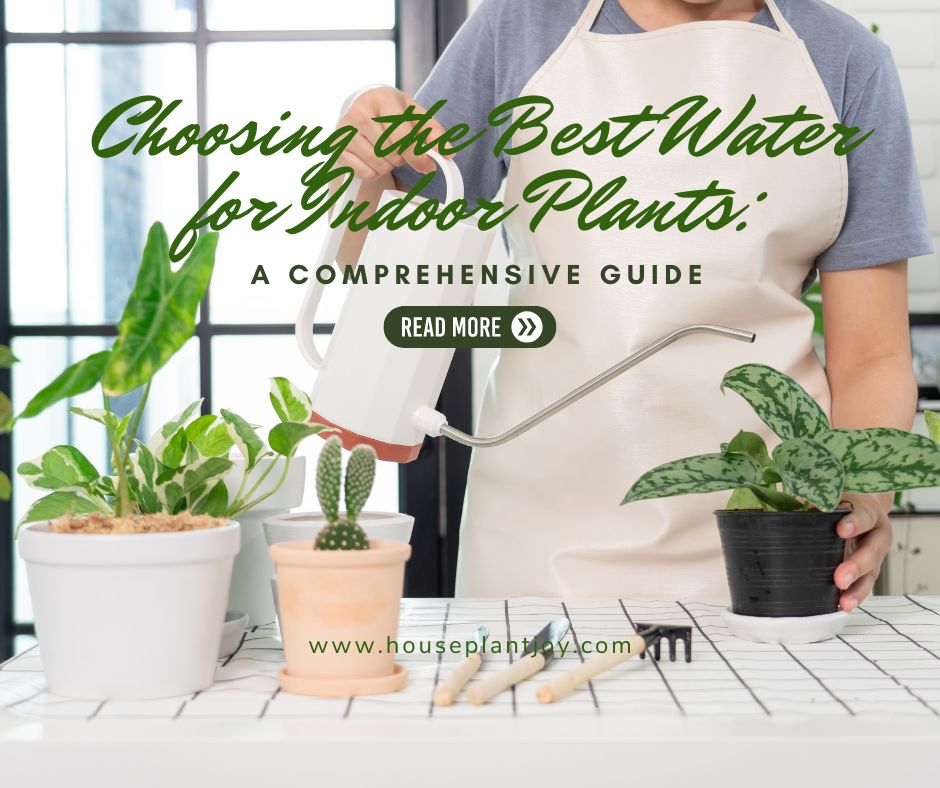
:max_bytes(150000):strip_icc()/tips-for-watering-houseplants-1902807-01-5cbe80fbfdc44c0096872b2d45fbcf19.jpg)
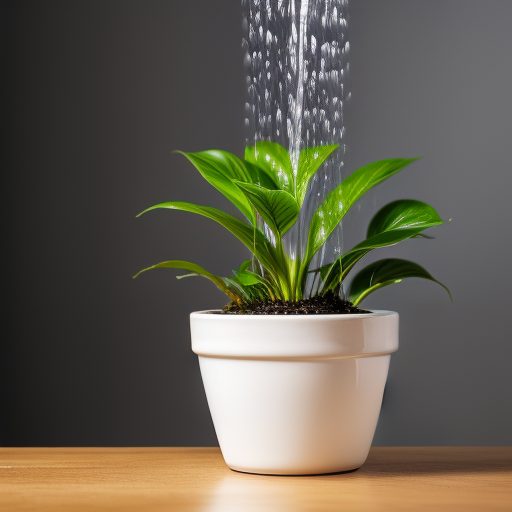
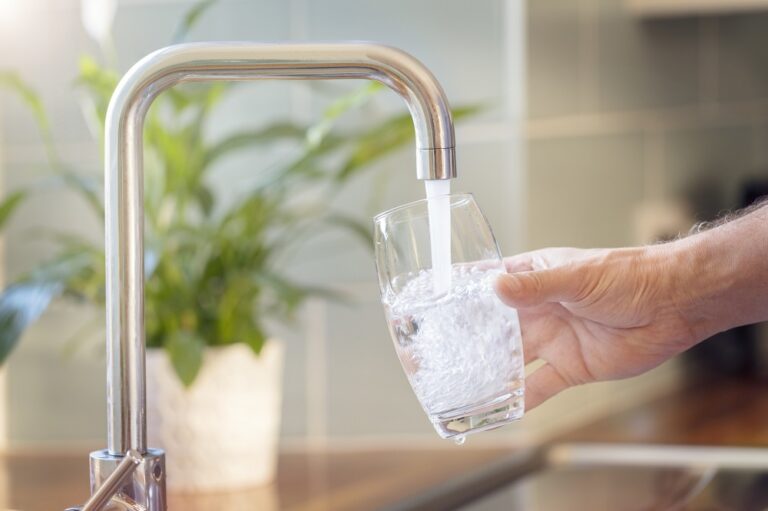

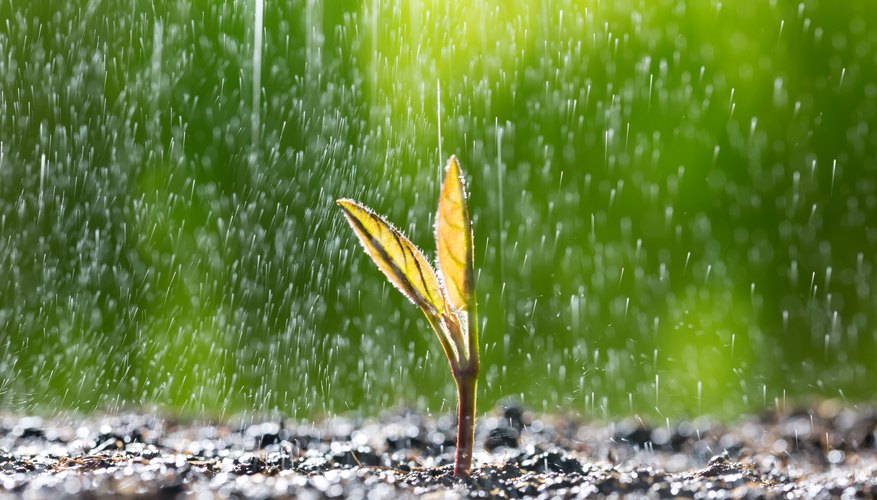

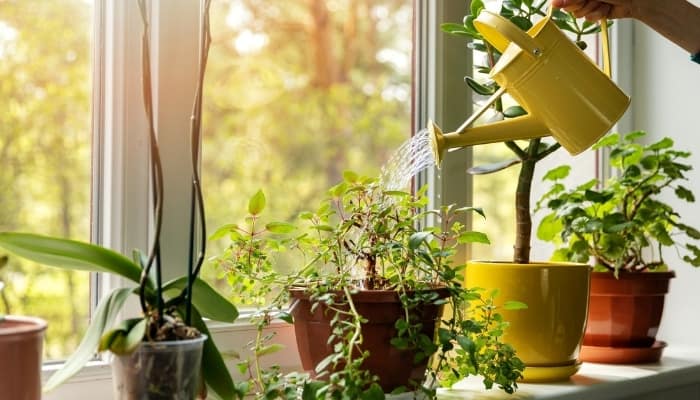
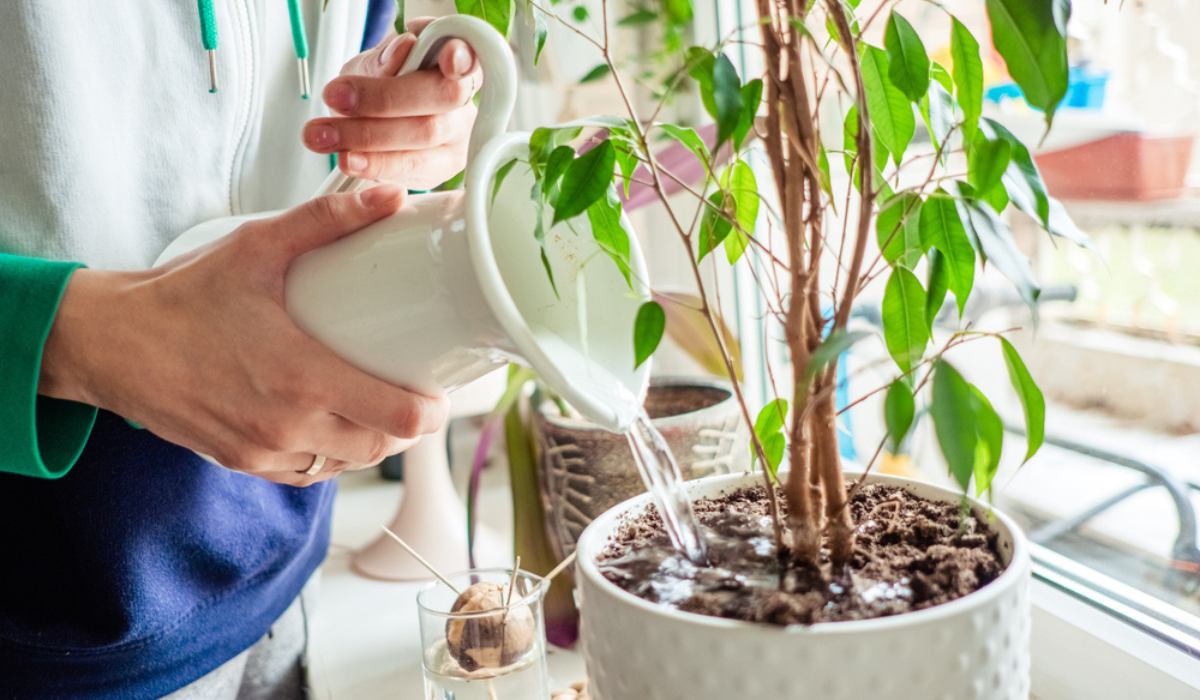
:strip_icc()/how-to-water-houseplants-5651236-primary-3aa1e5b5021640ee96184b6755caa964.jpg)



